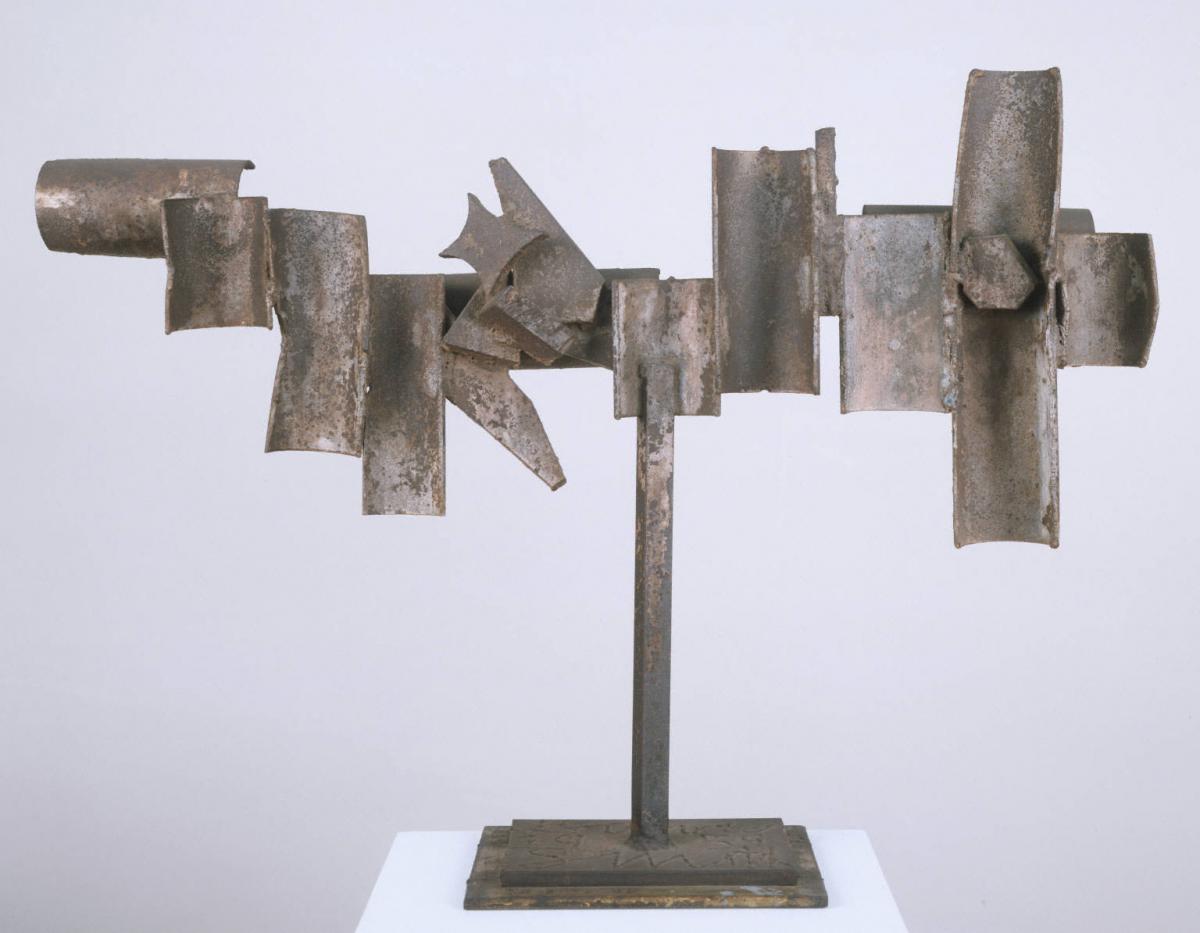Bouquet of Concaves
David Smith ( 1959 )

David Smith executed Bouquet of Concaves in 1959 at a crucial juncture in his career. Until that point, Smith designed his works first by drawing numerous sketches and constructing the sculpture. With Bouquet of Concaves, Smith documents his shift to “finding” the ultimate arrangement. In Bouquet of Concaves Smith created his composition by laying out the components on the floor on a white rectilinear background and rearranging them—sometimes daily—until they “found” their final order; only then were they were affixed together.
Bouquet of Concaves, and its peculiar manner of construction, is well-known because it was reproduced, along with an in-progress photograph, in the February 1960 issue of Arts magazine which featured Smith’s sculpture and drawing. When discussing Bouquet of Concaves, Smith explained that he was influenced by the tumbling and colliding shapes of Fernand Léger’s paintings.
Though Duncan Phillips never purchased any sculptures by Smith during his lifetime, there are two letters in the museum archives which attest to his interest in 1963 in acquiring one. The Phillips Collection was a venue in 1962 for the MoMA sponsored David Smith, An Exhibition of Abstract Sculpture, which consisted of 46 sculptures surveying Smith’s work from 1933 to 1960. In the end, despite his enthusiasm, Phillips never purchased a work by Smith, constrained by budget considerations and the high prices asked by the artist. Since the gift of Smith’s work in 2008, Bouquet of Concaves has found a welcome home at The Phillips Collection where there are many works by artists who were friends and associates of Smith, including Anthony Caro, Stuart Davis, Helen Frankenthaler, John Graham, Robert Motherwell, and Kenneth Noland, who was Smith’s “youngest close friend.”